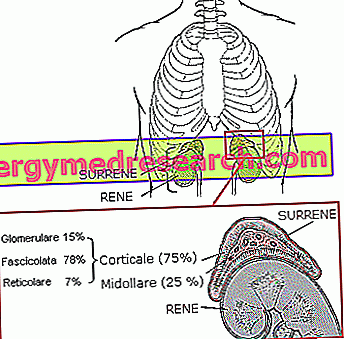Related articles: Baker cysts
Definition
Baker's cyst is a cystic formation due to the accumulation of synovial fluid in the popliteal area (behind the knee). This lesion originates directly from the posterior side of the knee joint or from the sheaths of the tendons that pass behind it.
The disorder is more frequently observed in subjects over the age of 55. Baker's cyst may be secondary to another knee condition, such as arthrosis, rheumatoid arthritis, or meniscal injuries. This training can also be associated with Lyme disease.
Sometimes the origin is idiopathic, so the Baker cyst manifests itself for no apparent reason; the patients affected by the latter form are usually children.
Most common symptoms and signs *
- Knee pain
- Articolar pains
- Edema
- Erythema
- Sore legs
- Swollen legs
- Legs tired, heavy legs
- Joint swelling
- Nodule
- Joint stiffness
- Articular noises
Further indications
The Ba ker cyst is characterized by the presence of a swelling, similar to a nodule, in the posterior area of the knee. The cyst can reach such dimensions as to become palpable.

In some cases, Baker's cyst is asymptomatic, but generally causes dull pain, present even at rest, exacerbated by knee flexion. The presence of this formation also causes swelling and joint stiffness.
The most common complication is rupture of the cyst with leakage of synovial fluid; in this case, the pain also radiates to the calf. Sometimes, edema of the legs and skin redness resulting from this condition can mimic a thrombophlebitis.
The diagnosis is essentially clinical and is confirmed by muscle-tendon ultrasonography of the knee. If possible, the treatment is intended to correct the cause that gave rise to the problem (arthritis, meniscal injury, etc.). In many cases, rest, leg elevation and corticosteroid infiltration are sufficient to reduce inflammation. In more serious cases, surgical excision may be indicated.



